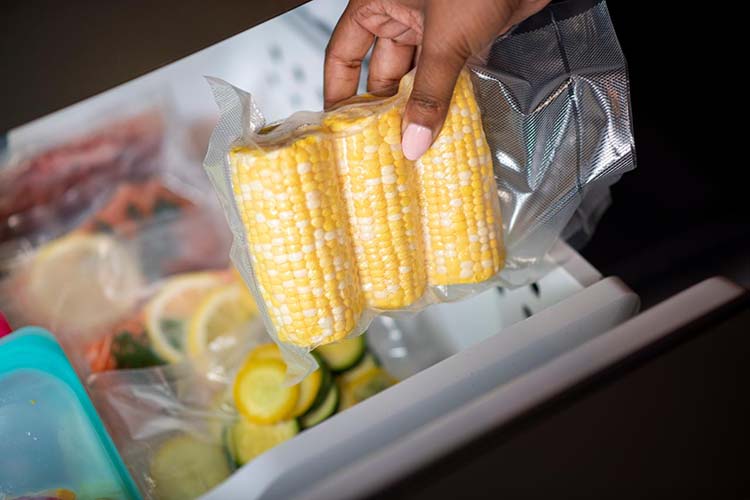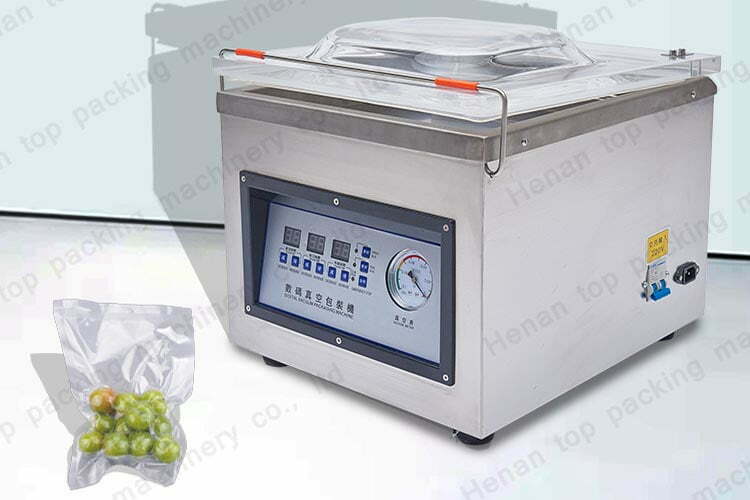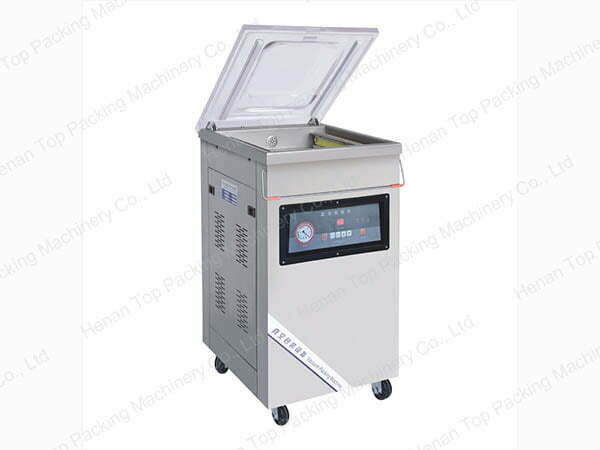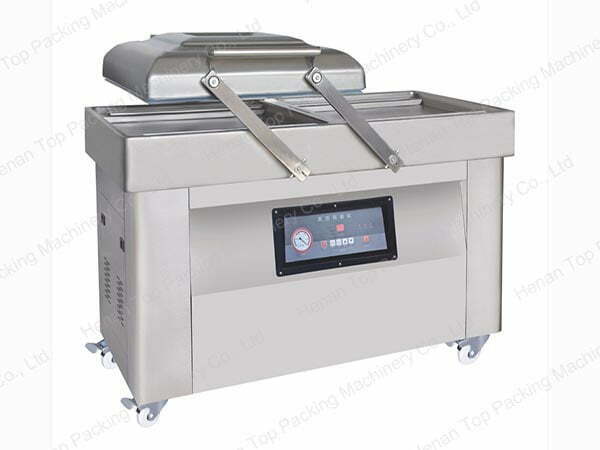The Ultimate Secret of Vacuum Packing Machine
A vacuum packing machine is a device that removes air from a package and seals it in order to preserve the freshness and longevity of its contents. These machines are commonly used in the food industry to extend the shelf life of perishable products, but they are also used in a variety of other industries to protect and store non-food items.

What packaging materials can be used?
Vacuum packing machines can be used with a variety of packaging materials, including bags, pouches, and rolls of film. The process of vacuum packing involves placing the item to be packed into the bag or pouch, sealing the bag or pouch, and then using the vacuum packing machine to remove the air and seal the bag or pouch. This creates a tight, airtight seal that helps to preserve the freshness of the contents and protect them from external factors such as moisture, oxygen, and bacteria.
Applications of vacuum packaging machine
In addition to their use in the food industry, vacuum packing machines are also used in a variety of other industries, including healthcare, industrial, and retail. They are particularly useful for storing items that are sensitive to changes in temperature, moisture, or other environmental factors.
Types of vacuum packaging machines
There are several types of vacuum packing machines, including chamber machines and external suction machines. Chamber machines are designed to seal and evacuate the air from a bag or pouch within a vacuum chamber. External suction machines, on the other hand, use a hose to remove the air from the bag or pouch.

What is the function of vacuum pack machine?
A vacuum pack machine is a device that removes air from a package and seals it in order to extend the shelf life of the contents. It is often used for storing perishable food items, such as meat, fish, and vegetables, as well as non-food items, such as documents and electronics.
The vacuum pack machine works by sucking the air out of the package through a hose or tube and then sealing the package with a heat seal or other type of closure. This process creates a vacuum inside the package, which helps to preserve the quality and freshness of the contents by inhibiting the growth of microorganisms and preventing oxidation.
Vacuum pack machines are used in a variety of settings, including commercial kitchens, grocery stores, and homes. They can be used to package a wide range of products, including dry goods, liquids, and even gases. Some vacuum pack machines are also equipped with additional features, such as the ability to marinate food or add a gas flush to the package to help preserve the quality of the contents.

Is vacuum packing worth it?
Vacuum packing can be a useful method for extending the shelf life of certain types of food and other items. By removing the air from the package and sealing it, vacuum packing helps to inhibit the growth of microorganisms, prevent oxidation, and keep the contents fresh for a longer period of time.
There are several factors to consider when deciding whether vacuum packing is worth it for a particular product or situation. Some things to consider include:
The type of product: Vacuum packing is most effective for perishable items that are prone to spoilage or deterioration, such as meat, fish, and vegetables.
The intended storage period: Vacuum packing can help extend the shelf life of certain products, but it is not a substitute for proper storage and handling. For example, vacuum-packed meat should still be stored in a refrigerator or freezer to prevent spoilage.
The cost and convenience of vacuum packing: Vacuum pack machines and bags can be relatively expensive, so it is important to weigh the cost against the potential benefits of vacuum packing.
Overall, vacuum packing can be a useful method for preserving the quality and freshness of certain products, but it is not always necessary or cost-effective. It is important to consider the specific needs and circumstances of the product in question to determine whether vacuum packing is worth it.
What are the disadvantages of vacuum packing?
There are several potential disadvantages to using vacuum packing:
Cost: Vacuum pack machines and bags can be relatively expensive, especially if you plan to use them frequently.
Limited compatibility: Some types of products may not be suitable for vacuum packing, either because they are too delicate or because they will be damaged by the vacuum process.
Reduced shelf life: While vacuum packing can help extend the shelf life of certain products, it is not a substitute for proper storage and handling. For example, vacuum-packed meat should still be stored in a refrigerator or freezer to prevent spoilage.
Limited effectiveness: Vacuum packing is most effective for perishable items that are prone to spoilage or deterioration, such as meat, fish, and vegetables. It may not be as effective for non-perishable items or products that are already well-preserved.
Risk of damage: If the vacuum pack machine is not used properly, or if the bags or seals are not of good quality, there is a risk that the contents of the package could be damaged or spoiled.
Overall, while vacuum packing can be a useful method for preserving the quality and freshness of certain products, it is not always necessary or appropriate. It is important to consider the specific needs and circumstances of the product in question before deciding whether vacuum packing is the right choice.

What foods last longest when vacuum sealed?
Vacuum sealing can help extend the shelf life of certain types of food by inhibiting the growth of microorganisms and preventing oxidation. Some foods that tend to last longer when vacuum sealed include:
Meat: Vacuum sealing can help preserve the quality and freshness of raw or cooked meat, including beef, pork, chicken, and lamb. Vacuum-sealed meat can be stored in the refrigerator or freezer for a longer period of time without losing quality or becoming spoiled.
Fish: Vacuum sealing can help preserve the quality and freshness of raw or cooked fish, including seafood such as shrimp, scallops, and lobster. Vacuum-sealed fish can be stored in the refrigerator or freezer for a longer period of time without losing quality or becoming spoiled.
Vegetables: Vacuum sealing can help preserve the quality and freshness of fresh vegetables, including leafy greens, carrots, and peppers. Vacuum-sealed vegetables can be stored in the refrigerator for a longer period of time without losing quality or becoming spoiled.
Fruits: Vacuum sealing can help preserve the quality and freshness of certain types of fresh fruit, including berries, cherries, and apples. Vacuum-sealed fruit can be stored in the refrigerator for a longer period of time without losing quality or becoming spoiled.
Grains: Vacuum sealing can help preserve the quality and freshness of grains, including rice, quinoa, and oats. Vacuum-sealed grains can be stored in a cool, dry place for a longer period of time without losing quality or becoming spoiled.
It is important to note that vacuum sealing is not a substitute for proper storage and handling of food. Vacuum-sealed products should still be stored in appropriate conditions and handled safely to prevent spoilage or contamination.
Can bacteria grow in vacuum sealed?
Vacuum sealing can help inhibit the growth of microorganisms, including bacteria, by removing the air from the package and sealing it. The vacuum inside the package creates an oxygen-free environment that is inhospitable to many types of bacteria, which can help extend the shelf life of the contents.
However, it is important to note that vacuum sealing is not a foolproof method for preserving the quality and freshness of food. Bacteria can still grow on or in vacuum-sealed products if they are not handled or stored properly, or if the vacuum seal is compromised.
For example, if vacuum-sealed meat is not stored at the proper temperature (below 40°F / 4°C), bacteria can grow and spoil the meat. Similarly, if vacuum-sealed vegetables are not washed or handled properly, they can become contaminated with bacteria.
Overall, vacuum sealing can help extend the shelf life of certain types of food, but it is not a substitute for proper storage and handling to prevent spoilage or contamination. It is important to follow proper food safety guidelines when storing and handling vacuum-sealed products to ensure that they remain safe and of high quality.
